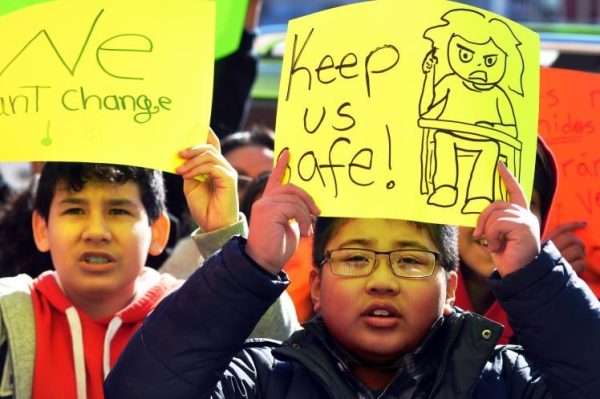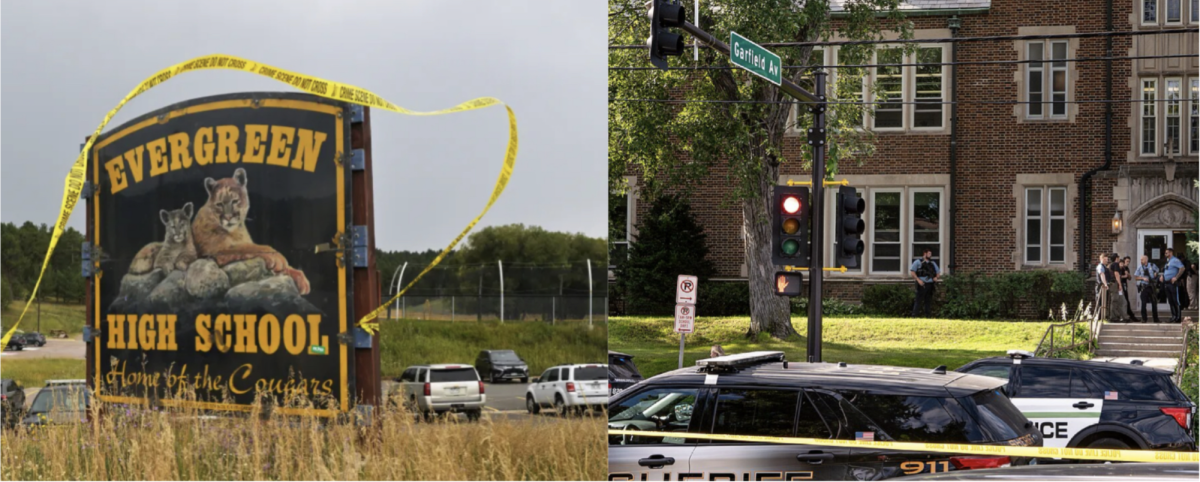The recent school shootings at Colorado’s Evergreen High School and Minneapolis’ Annunciation Catholic School have once again raised the pressing question: How do schools best protect their students? Lockdowns, drills, and increased security have become the norm across the country, yet these tragedies signal that no solution is flawless. This shows in the data from the National Center for Education Statistics, saying that over 80% of public schools now use security cameras and controlled entry systems, while the number of school shootings has still risen in recent years. As schools are searching for solutions, some are now looking toward restorative justice as part of the broader conversation about school safety.
Restorative justice is a practice centered on repairing harm and building relationships. Instead of relying on suspensions and expulsions, it addresses conflict by holding students accountable in constructive ways. The goal is not to excuse misconduct but to ensure responsibility while keeping students connected to their school community. By emphasizing relationships, restorative justice aims to reduce isolation and bring a sense of belonging.
Research shows that these practices can produce a measurable effect. A study published in Frontiers in Psychology found that schools implementing restorative justice practices generally report fewer suspensions and expulsions, along with improvements in school climate and student’s mental health. Similarly, a University of Chicago Education Lab Study revealed decreases in arrests and suspensions, while teachers noted calmer, more peaceful classrooms. The Learning Policy Institute has also identified restorative justice as a part of a national shift away from zero tolerance policies, such as suspension and expulsion for students. Compared these policies, restorative justice holds the potential to design safer and more equitable schools. The question, however, is whether or not these same benefits can apply to the deeper issues that contribute to tragedies like school shootings.

The incident at Evergreen High School involved two students and took place during school hours, leaving several injured and the community severely traumatized. At Annunciation Catholic, a former student opened fire during the school Mass, murdering two young children and injuring many others. Both tragedies illustrate the limitations of traditional safety protocols, which may be able to reduce immediate harm but rarely confronts the underlying drivers of violence, including social isolation, mental illness, or grievance. It’s essential to perceive these root causes, because violence prevention requires schools that can identify and heal emotional pain before it reaches a tipping point. Restorative justice is a matter of rebuilding trust and relationships, as it creates space for open communication, conflict resolution, and early recognition of destructive indicators long before tragedy ever occurs. Fostering a sense of belonging and creating an environment where people feel safe to express themselves helps to reduce negative feelings that often lead to violence. By promoting the spread of empathy, people can shift towards mutual understanding and trust rather than destructive behaviors, which could ultimately help to avert tragedies.
One example of this impact can be seen at Austin Achieve Middle School. For years, eighth grader Luz Annette struggled with constant fights and frequent suspensions. But after transferring to Austin Achieve, she started to appreciate how suspensions were replaced with restorative justice circles and counseling. In group sessions, students take the time to share their experiences with one another and refrain from criticism. “It was gorgeous,” Luz says. “[The other students] talk about their problems and then you’re, like, ‘Oh, same,’ you know? And that was literally the best—that we had a trust in that circle.” By creating opportunities for connection, restorative justice can act as an early intervention tool. Restorative methods also produce healthier ways to resolve disputes, reducing the alienation that can sometimes lead to serious issues, such as bullying, substance use, chronic absenteeism, depression, etc.
Despite its potential, restorative justice is by no means the end-all, be-all response to school violence. Effective use of restorative justice demands extensive training, dedication, and time to build trust across a school community. Without adequate resources, programs can falter, with some students benefiting while others do not. Many educators emphasize that restorative justice should not replace mental health services, counseling, or emergency preparedness, but instead be integrated alongside these measures. In this sense, restorative justice is best seen as one layer of a broader safety framework, complementing rather than replacing existing protocols.

As schools nationwide continue to respond to incidents like Evergreen and Annunciation, more emphasis is being placed on restorative justice. It is not a complete solution, but research supports that it can reduce disciplinary problems, strengthen relationships, and build climates where students feel supported. While it may not stop every tragedy, restorative justice shifts the focus towards prevention through connection and accountability.
For all schools in general, including here at Archbishop Mitty, these are issues that echo on. What does it really mean to feel safe on campus? How do relationships work? Is the community invested in that safety? The Evergreen and Annunciation cases are reminders that security alone is not enough. Restorative justice has something to offer: a perspective that views safety not just as physical, but also emotional. A school where students are seen and heard for may, in fact, be a safer school for everyone.


